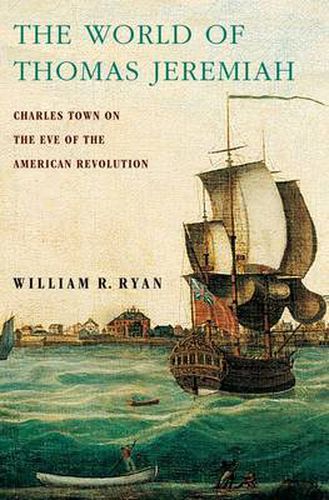Readings Newsletter
Become a Readings Member to make your shopping experience even easier.
Sign in or sign up for free!
You’re not far away from qualifying for FREE standard shipping within Australia
You’ve qualified for FREE standard shipping within Australia
The cart is loading…






This book profiles the port of Charles Town, South Carolina, during the two-year period leading up to the Declaration of Independence. It focuses on the dramatic hanging and burning of Thomas Jeremiah, a free black harbor pilot and firefighter accused by the patriot party of plotting a slave insurrection during the chaotic spring and summer of 1775. To examine the world of this wealthy, slave-holding African American through his trial and execution, Ryan uses a wide array of letters, naval records, personal and official correspondence, memoirs and newspapers. He finds that the black majority of the South Carolina Lowcountry managed to assist the British in their invasion efforts, despite patriot attempts to frighten Afro-Carolinians into passivity and submission. Although Whigs attempted, through brutality and violence, to keep their slaves from participating in the conflict, Afro-Carolinians became actively involved in the struggle between colonists and the Crown as spies, messengers, navigators and marauders. The book demonstrates that an understanding of what was going on in this vital port city during the mid-1770s has broader implications for the study of the Atlantic World, African American history, naval history, urban race relations, labor history, and the turbulent politics of America’s move toward independence.
$9.00 standard shipping within Australia
FREE standard shipping within Australia for orders over $100.00
Express & International shipping calculated at checkout
This book profiles the port of Charles Town, South Carolina, during the two-year period leading up to the Declaration of Independence. It focuses on the dramatic hanging and burning of Thomas Jeremiah, a free black harbor pilot and firefighter accused by the patriot party of plotting a slave insurrection during the chaotic spring and summer of 1775. To examine the world of this wealthy, slave-holding African American through his trial and execution, Ryan uses a wide array of letters, naval records, personal and official correspondence, memoirs and newspapers. He finds that the black majority of the South Carolina Lowcountry managed to assist the British in their invasion efforts, despite patriot attempts to frighten Afro-Carolinians into passivity and submission. Although Whigs attempted, through brutality and violence, to keep their slaves from participating in the conflict, Afro-Carolinians became actively involved in the struggle between colonists and the Crown as spies, messengers, navigators and marauders. The book demonstrates that an understanding of what was going on in this vital port city during the mid-1770s has broader implications for the study of the Atlantic World, African American history, naval history, urban race relations, labor history, and the turbulent politics of America’s move toward independence.